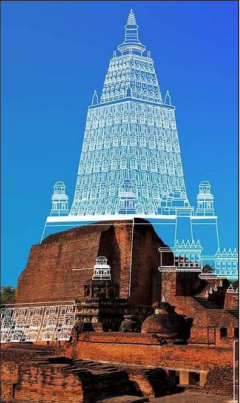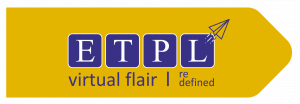
The education system across globe is evolving to incorporate technology to reach higher levels of efficiency every day, while alongside technology itself is evolving to elevate the standards of education. In the process, a novel idea named Adaptive Learning has made its way into the system with a promise of drastic impact on young minds’ relationship with technology based learning.
As the name suggests, Adaptive Learning is system that adapts and evolves as per the capabilities of every individual student. The underlying concept is that every child is different and the traditional system of mass education is no longer efficient in the specialized world. Adaptive Learning thus comes into the picture as a means of individualistic learning through which students can learn and master at their own pace and interest.
The system of Adaptive Learning transforms students from mere receivers to interactive contributors in the education system. Computers are programmed to collect active and passive feedback and restructure learning ways and material based on the same in ways that can be fruitful to the maximum extent. Active feedback is collected through students’ responses to the tests and questions posed to them while passive feedback methodology keeps track of the learning curve of the student and intelligently analyses the student’s needs and preferences.
Adaptive Learning technology can find its implementation value in all levels of education from primary to higher education and even corporate training. This can alleviate the pressure of mass learning and the obligation on the ends of students to learn and pass tests in subjects that they’re not interested in. With technological means of providing individual attention, institutions can depute man power to better the academic material and administrative measures further.

India has and will forever pride on the historic aspect of Nalanda University that existed 427 to 1197 CE and was destroyed by a the Turkish invader Bhaktiyar Khalji in 1202. We have grown up hearing that the University was so rich in knowledge resources that it burned for three whole months when it was set on fire and displaced thousands of students from all around the world from their pursuit of advanced education. The lesser known facts include that the university functioned with more than 2,000 teachers and over 10,000 students pursuing subjects including Philosophy, Religion, Buddhism, Astronomy, Mathematics, Anatomy, Linguistics and so on. Bhaktiyar Khalji wasn’t the sole destructor of Nalanda; just the final one. Nalanda was destroyed three times before – in the fifth century, in the seventh century and the twelfth century. Each time, it was rebuilt by the Maurya and Pala dynasty rulers who fostered education at the time. In 2014, Nalanda University restarted its functioning after almost millennia of lying in ruin with a small number of students from across the globe. It started with the School of Historical Sciences and School of Environment and Ecology with a vision of re-establishing its long lost glory.

The festival season is upon us and there couldn’t be a better time to resort to the incredible world of Indian legends, presented with a dash of fictional creativity. Our readers would be well aware of what is popularly known as ‘Amishverse’, a universe of facts, fiction and legend created on the story of Lord Shiva in his extremely popular series ‘Shiva Trilogy’. The series includes three books namely the Immortals of Meluha, The Secret of the Nagas and The Oath of the Vayuputras – all of them bulky volumes but ones that no reader can put down without completing.
The Shiva Trilogy involves characters that are familiar to us from the Indian legends we have been brought up with, but Amish has given the story his own perspective and introduced geographic, physical and political contexts of grand scale. Shiva is the fabled saviour that Meluha welcomes with anxious eyes and a saga of conflict, love and rivalry follows that offers us perspectives of unexpected range. Amish Tripathi’s novel take on Indian legend of Shiva through an elaborate series of three books is ePatra’s recommendation for this festive season.
A recent report by UNESCO has revealed that India still faces a serious concern in terms of managing the PTR – pupil teacher ratio in numerous schools in the country, significantly Goa and Telangana.
Government data derived by UNESCO mentions that India has a total of 9 million school teachers, which looks like a good number on paper but the issue lies in division of the teaching resources. 69% of these teachers are actually working for schools without a reliable full-time contract, which causes a serious glitch in the PTR as well. As per available data, the PTR currently stands are 26:1 (one teacher per 26 students) in overall schooling.
The PTR is in fact in adherence to the standards prescribed by RTE Act – Right to Education Act on a countrywide level but the differences in various states and the contradictions in data in primary schools, secondary schools, private schools and government schools pose a stark difference. The UNESCO report states that 22% of primary schools have PTRs greater than 30:1, and secondary and senior secondary schools have PTRs between 43:1 and 47:1. The report also states that 10% to 15% schools in several states are still single-teacher institutions.
Such a large population of teachers being non-contractual staff contributes heavily to the discrepancy in the PTR in India. Government schools have since inception been victims of poor PTRs that have caused their downfall in the country and the issue is still far from resolved.

Handcrafted with by eReleGo Technologies Pvt Ltd
We are located at

eReleGo Technologies Pvt Ltd
646, 52, 12th Main Rd,
2nd Block, Rajajinagar,
Bengaluru, Karnataka 560010
This website uses cookies to ensure you get the best experience on our website.